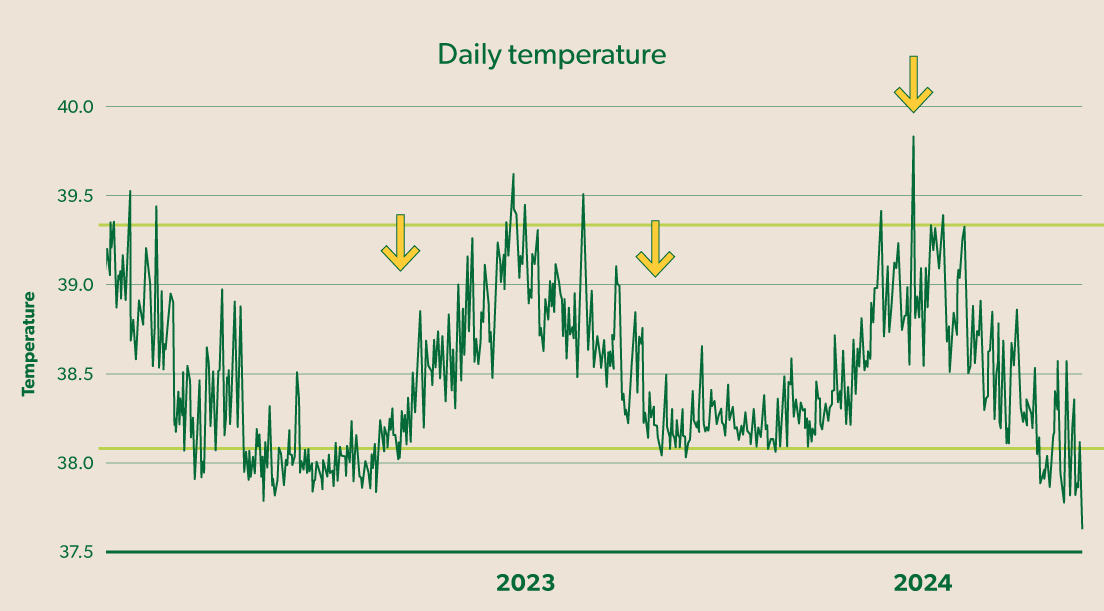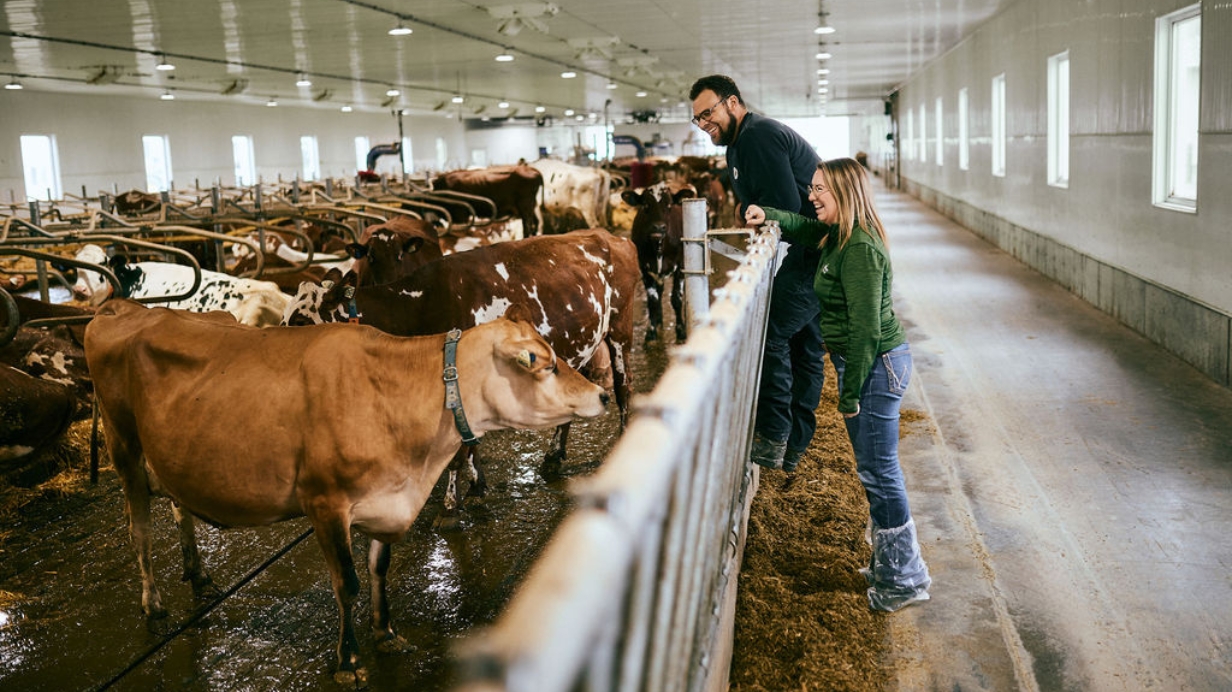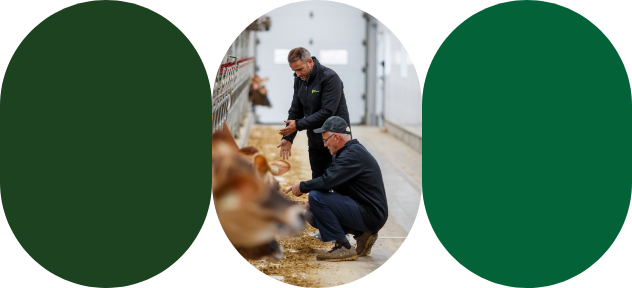Heat stress and robotic milking performance
Heat stress can affect dairy cows as early as April, negatively impacting robotic milking performance from spring right through to fall. That’s according to the latest data analyzed by Sollio Agriculture.
The data is clear: The impact of heat stress on our dairy farms is much more significant than previously thought. And given the rising temperature trends in Canada, the problem is likely to worsen unless corrective action is taken.
Let’s look at how heat stress can negatively affect milk production, specifically with robotic milking systems.
The impact of heat stress on dairy cows
Heat stress can influence the daily activity, welfare, and health of dairy cows, which in turn impacts the technical and financial performance of farms.
We’ve long known that when the Temperature-Humidity Index (THI) reaches 68, cows begin to experience stress. That stress can affect:
Voluntary dry matter intake (decrease of 10%–20%)
Milk production (decrease of 10%–35%)
Milk component production (fat and protein)
Reproductive performance
Rumen, feet and leg health
Add to that the potential repercussions for cows in late gestation, their calves, and the cows those calves will become, and there are many reasons to take heat stress seriously.
How does heat affect robotic milking performance?
Under heat stress, a cow’s body temperature, respiration rate, and heart rate all increase. She’ll drink more water, but rumination and intestinal motility will decrease.
Her behaviour will also change: she’ll move and walk less and spend more time standing to help dissipate body heat.
A cow’s normal body temperature is about 38.6°C. As shown in a study published in the Journal of Dairy Science, a body temperature of 38.93°C means there is a 50% chance the cow will be standing rather than lying down. So, a difference of just 0.33°C can influence cow behaviour.
What’s more, it’s estimated that the environmental temperature at which a cow will experience heat stress is 5°C lower if she produces 45 kg of milk compared to 35 kg (Berman, 2005).
The effects of heat stress on cow behaviour are further amplified in robotic milking systems. That’s because if a cow’s activity patterns change, their milking habits may also change.
Six months of every year
Sollio Agriculture took a close look at heat stress in 2024. We know that milk temperature is strongly correlated with body temperature, so we studied milk temperature on several farms over at least two years.
Our data showed that as early as April, the 0.33°C threshold that triggers behavioural changes in cows was already reached.
The following table is an example from a farm showing the average milk temperature for the herd over a two-year period.

We can see in the graph that temperatures start to rise in April. For most farms, a return to initial body temperature was observed around late October or early November. That means cows spend about six months in a thermal zone where their behaviour is likely to change.
Although the ventilation needed to be improved at the farm shown above, a significant majority of the farms observed showed similar temperature gradients. Farms with better ventilation had smaller gradients and less production loss, but still regularly reached the tipping point of 38.93°C.
Financial losses caused by heat stress
We analyzed Lactascan data for the farm shown above, which has about 180 kg of quota. The farm’s income loss due to heat stress was estimated at $2,500 per month for the three hottest months and about $1,000 per month for the other three months—a total annual loss of around $10,500.
Every farm is unique, but heat stress is an issue on the vast majority of Québec farms, to a much greater extent than previously estimated.
As a farmer, you should take the time to thoroughly analyze the impact of heat stress on your dairy herds. Your agri‑advisor can analyze the data to evaluate the impact of heat stress and point you toward solutions that will improve your farm’s profitability and animal welfare.



